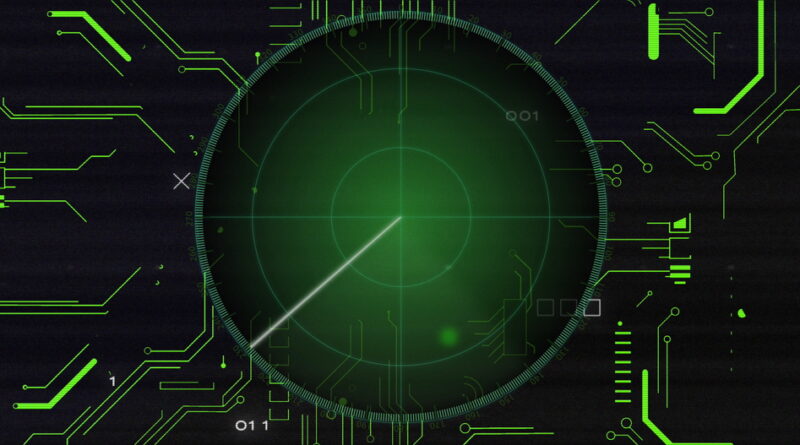Could the Skies Be the Next Cyber Battleground? Why Pilots Are Growing Anxious About Aircraft Hacking
It began with a voice—”Traffic, traffic”—blaring from cockpit speakers over Washington, DC. Within seconds, autopilots were disengaged, flight decks tensed, and airliners swerved to avoid phantom collisions. But there was nothing there.
Earlier this year, pilots flying near Ronald Reagan National Airport received what turned out to be false mid-air collision warnings from their onboard safety systems. The alert was real. The threat was not. Investigations later revealed the cause was a spoofed signal—a fabricated broadcast mimicking another aircraft’s location, speed, and altitude. The aviation industry took notice. So did cyber experts.
Now, growing numbers of pilots and cybersecurity professionals are raising a chilling possibility: Could hackers be preparing to target airplanes next?
A System Built to Save Lives – and Now Vulnerable?
The near-miss at Reagan Airport didn’t just raise eyebrows. It struck at the heart of a system trusted to keep planes safely apart: TCAS, or Traffic Collision Avoidance System.
Installed on virtually all commercial airliners, TCAS is a silent guardian of the skies. It monitors nearby aircraft via radio transponders, calculating trajectories and issuing real-time instructions to pilots: “Climb. Descend. Avoid collision.”
Since its implementation—spurred by disasters like the 1978 Grand Canyon crash that claimed 144 lives—TCAS has helped prevent countless mid-air catastrophes. But as recent events have shown, the system can be deceived.
“We’re trained to trust it,” one long-haul pilot told The Telegraph. “But if someone spoofs it, you could be reacting to a threat that doesn’t exist—and putting the aircraft at risk in the process.”
The Mechanics of a Modern Threat
Spoofing, in technical terms, is the practice of broadcasting fake signals that appear legitimate. In the case of TCAS, a well-placed, false transponder signal can cause an aircraft to believe another plane is on a collision course—triggering sudden evasive actions.
Cybersecurity researcher Ken Munro of Pen Test Partners says it’s not just possible—it’s been proven in simulations. His team showed in 2020 that off-the-shelf electronics and downloadable software could be used to manipulate TCAS warnings.
And pilots under stress? They’ll obey those warnings almost without question.
“At 35,000 feet, you can’t see out far enough to verify what TCAS says,” the pilot explained. “You just react.”
Inside the Cockpit: Chaos in the Skies
When a TCAS alert hits, two pilots spring into coordinated action. But in a spoofed scenario, their reactions could backfire. Rapid altitude changes at high speeds risk destabilising the aircraft, particularly if the autopilot is disconnected. One pilot may be forced to manually control the plane while the other tries to decipher what’s real and what’s rogue.
The danger isn’t just physical—it’s psychological. Misplaced trust in systems, sudden confusion, and conflicting information in a high-pressure environment can lead to catastrophic decisions. As the anonymous pilot put it: “You’ve got one guy trying to fly, one guy trying to figure out what the f— is going on, and no one is watching for the real threats.”
Hackers, State Actors, and Accidental Incidents
Though a coordinated, malicious attack has not yet been confirmed, the Reagan Airport incident may have edged uncomfortably close. According to New York Magazine, a government source alleged the US Secret Service was behind the spoofing, testing equipment near the Vice President’s residence—without alerting aviation authorities.
The Secret Service later confirmed it was investigating how its systems might interfere with air traffic, and the FAA said the source was “pinpointed and corrected.”
But this near-accident has laid bare a much bigger issue: the skies are now part of the cyber battlefield.
From retail hacks to ransomware attacks, cybercriminals are becoming more sophisticated, better resourced, and less predictable. If critical infrastructure—hospitals, oil pipelines, power grids—can be breached, why not aircraft?
The US Cybersecurity and Infrastructure Security Agency (CISA) warned in January that spoofed signals could trigger false collision warnings, using custom-built radio systems and low-latency software. Their message: the threat is no longer theoretical.
What Happens When Pilots Stop Trusting Their Systems?
Interestingly, a 2020 Oxford University study explored just that. In simulations, 30 commercial pilots were exposed to spoofed TCAS alerts. Most initially followed them, but once patterns of false alarms emerged, they began to ignore the system—muting warnings and relying on other instruments.
That raises its own risks. If pilots stop trusting TCAS, its ability to prevent genuine collisions could be compromised. It’s a digital equivalent of the “boy who cried wolf.”
Regulators and Industry Respond—But Is It Enough?
On both sides of the Atlantic, aviation bodies are beginning to act. The UK’s Civil Aviation Authority (CAA) has acknowledged the threat and is working with airlines, manufacturers, and global regulators to reduce risks associated with jamming and spoofing.
“While these events remain rare, we are closely monitoring global incidents and reviewing safety protocols,” said Glenn Bradley, the CAA’s Head of Flight Operations.
Penetration testing, industry-led simulations, and stronger airspace monitoring are on the agenda. But the nature of spoofing—relatively easy to implement, hard to detect—makes prevention a game of digital whack-a-mole.
The Final Frontier of Cybersecurity?
For now, airline passengers have little reason to panic. Incidents like the Reagan false alarms remain rare. But aviation’s long-standing assumption—that the sky is too vast and systems too secure for cyber attackers—is being challenged.
Pilots are right to worry. In a world where teenage hackers can infiltrate retail giants and ransomware gangs can hold governments to ransom, aircraft are no longer untouchable.
What was once a cockpit’s comforting robotic voice—“Traffic, traffic”—may now carry a new subtext: beware the invisible hand behind the signal.
Photo Credit: DepositPhotos.com


When I initially commented I clicked the “Notify me when new comments are added” checkbox and now each time a
comment is added I get four e-mails with the same comment.
Is there any way you can remove people from that service?
Cheers!